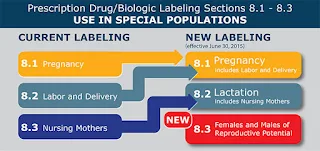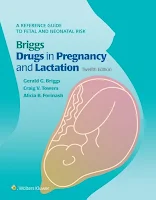Drugs and Pregnancy
Introduction
The thalidomide tragedy was a great lesson for all of us to investigate safety data of drugs, particularly during pregnancy.
- Thalidomide was initially marketed for morning sickness, but later found to cause congenital defects, leading to its withdrawal from the market.
- Today, thalidomide is indicated for multiple myeloma, but it is crucial to provide contraceptive advice before starting the medication.
It is worth noting that many commonly prescribed drugs, which we dispense on a daily basis, may not necessarily be safe or recommended during pregnancy.
- The MHRA UK has been actively raising awareness about the teratogenicity of sodium valproate.
- Additionally, statins should be avoided in pregnancy due to potential teratogenicity, although some conflicting data exists.
- Similarly, ACE inhibitors are not the first line treatment for hypertension during pregnancy due to their teratogenicity.
- Maternal use of topical methyl salicylate should be avoided beginning at 20 weeks' gestation.
To avoid potential risks, it essential to check the safety of each drug on the prescription before it is too late.
NOTE: Lifestyle modifications should always be considered first when treating pregnant patients. This includes encouragement to stop using illicit drugs, alcohol and tobacco, each of which is teratogenic.
FDA Pregnancy and Lactation Labelling Final Rule, 2015
In the past, FDA Pregnancy Categories was used in US.
- Category A - Adequate and well-controlled studies have failed to demonstrate a risk to the foetus in the first trimester of pregnancy (and there is no evidence of risk in later trimesters).
- Category B - Animal reproduction studies have failed to demonstrate a risk to the foetus and there are no adequate and well-controlled studies in pregnant women.
- Category C - Animal reproduction studies have shown an adverse effect on the foetus and there are no adequate and well-controlled studies in humans, but potential benefits may warrant use of the drug in pregnant women despite potential risks.
- Category D - There is positive evidence of human foetal risk based on adverse reaction data from investigational or marketing experience or studies in humans, but potential benefits may warrant use of the drug in pregnant women despite potential risks.
- Category X - Studies in animals or humans have demonstrated foetal abnormalities and/or there is positive evidence of human foetal risk based on adverse reaction data from investigational or marketing experience, and the risks involved in use of the drug in pregnant women clearly outweigh potential benefits.
However, this category system has proven to be confusing and overly simplistic, lacking sufficient information on potential risks.
- For instance, some practitioners may believe that risk increases from category A to B to C to D to X, which is not the intent.
- An FDA pregnancy category of C is also of little practical value.
- In addition, practitioners may not be aware that some medications are categorized based on animal data, while others are based on human data.
To address this, on 13 December 2014, the FDA published the Pregnancy and Lactation Labelling Rule” (PLLR).
- This rule, effective from 30 June 2015, replaces the pregnancy category system with scientific data and other information specific to the use of the drug in pregnant women.
- Labelling for prescription drugs approved on or after 30 June 2001, will be phased in gradually.
Although the labelling has been updated, many prescribers continue to use the traditional terminology in practice.
- Hence, it is important to remain familiar with the traditional categories.
Australian Categories for Prescribing Medicines in Pregnancy
Australia has a slightly different pregnancy category system from the United States – notably the subdivision of Category B (i.e. B1, B2 and B3 categories). However, it is important to take note that the allocation of a B category does not imply greater safety than a C category.
Definitions of the Australian categories for prescribing medicines in pregnancy is as below:
- Category A - Drugs which have been taken by a large number of pregnant women and women of childbearing age without any proven increase in the frequency of malformations or other direct or indirect harmful effects on the foetus having been observed.
- Category B1 - Drugs which have been taken by only a limited number of pregnant women and women of childbearing age, without an increase in the frequency of malformation or other direct or indirect harmful effects on the human foetus having been observed. Studies in animals have not shown evidence of an increased occurrence of foetal damage.
- Category B2 - Drugs which have been taken by only a limited number of pregnant women and women of childbearing age, without an increase in the frequency of malformation or other direct or indirect harmful effects on the human foetus having been observed. Studies in animals are inadequate or may be lacking, but available data show no evidence of an increased occurrence of foetal damage.
- Category B3 - Drugs which have been taken by only a limited number of pregnant women and women of childbearing age, without an increase in the frequency of malformation or other direct or indirect harmful effects on the human foetus having been observed. Studies in animals have shown evidence of an increased occurrence of foetal damage, the significance of which is considered uncertain in humans.
- Category C - Drugs which, owing to their pharmacological effects, have caused or may be suspected of causing, harmful effects on the human foetus or neonate without causing malformations. These effects may be reversible. Accompanying texts should be consulted for further details.
- Category D - Drugs which have caused, are suspected to have caused or may be expected to cause, an increased incidence of human foetal malformations or irreversible damage. These drugs may also have adverse pharmacological effects. Accompanying texts should be consulted for further details.
- Category X - Drugs which have such a high risk of causing permanent damage to the foetus that they should not be used in pregnancy or when there is a possibility of pregnancy.
The database is continuously being updated as of today and database search can be accessed here.
However, since the publication of the 20116 edition, the Australian Medicines Handbook has shifted away from using pregnancy categories for the similar reasons mentioned by FDA.
- Most people incorrectly assume that the alphabetical code is one of safety (although the TGA explains that this is not the case).
- Categories do not indicate which stages of foetal development might be affected.
- Categories may not change despite the availability of new information.
- Categories are not able to convey information about the balance between risks and benefits in a particular situation.
Again, balance between risks and benefits of a medicine in pregnancy should always be considered, instead of depending solely on the pregnancy category.
Data Comparison
There are instances where drugs have different categorizations between the FDA and Australia.
- Bisacodyl tablet is pregnancy category B in FDA but pregnancy category A in Australia.
- Chlorpheniramine is pregnancy category B in FDA but pregnancy category A in Australia.
- Ethambutol tablet is pregnancy category C in FDA but pregnancy category A in Australia.
- Loratadine is pregnancy category B in FDA but pregnancy category B1 in Australia.
- Miconazole 2% cream is pregnancy category C in FDA but pregnancy category A in Australia.
- Theophylline SR 250 mg is pregnancy category C in FDA but pregnancy category A in Australia.
Briggs' Drugs in Pregnancy and Lactation
Apart from standard references such as Australian Medicines Handbook, British National Formulary and Lexicomp, I would like to draw your attention to this book: Drugs in Pregnancy and Lactation.
Drugs in Pregnancy and Lactation contains detailed monographs on over 1400 commonly prescribed drugs used during pregnancy and lactation.
- The monographs provide information on known or possible effects on the mother, embryo, foetus, and nursing infant.
This book received highly recommended recognition in Obstetrics and Gynaecology at the British Medical Association (BMA) Medical Book Awards in 2018 and selected as a Doody's Core Title for 2022 and 2023.
Summary
When considering any medication, the first question should always be whether it is necessary.
- If yes, is there a preferred alternative?
It is good practice to review the pregnancy and breastfeeding safety data of drugs whenever there is uncertainty.
Pregnancy categories should not be taken at face value as they do not fully convey information about the balance between risks and benefits in a particular situation.
External Links
- MIMS Pregnancy Safety
- BUMP - Best Use of Medicines in Pregnancy
- Evaluating Medication Use in Pregnancy and Lactation: What Every Pharmacist Should Know, 2013
- Classifying drugs in pregnancy, 2014
- OTC Medication Use in Pregnancy and Breastfeeding, 2019
- SPS UK - Information resources for advice about medicines in pregnancy, 2023
- UK Teratology Information Service
- Drug safety in pregnancy, 2025



Comments
Post a Comment